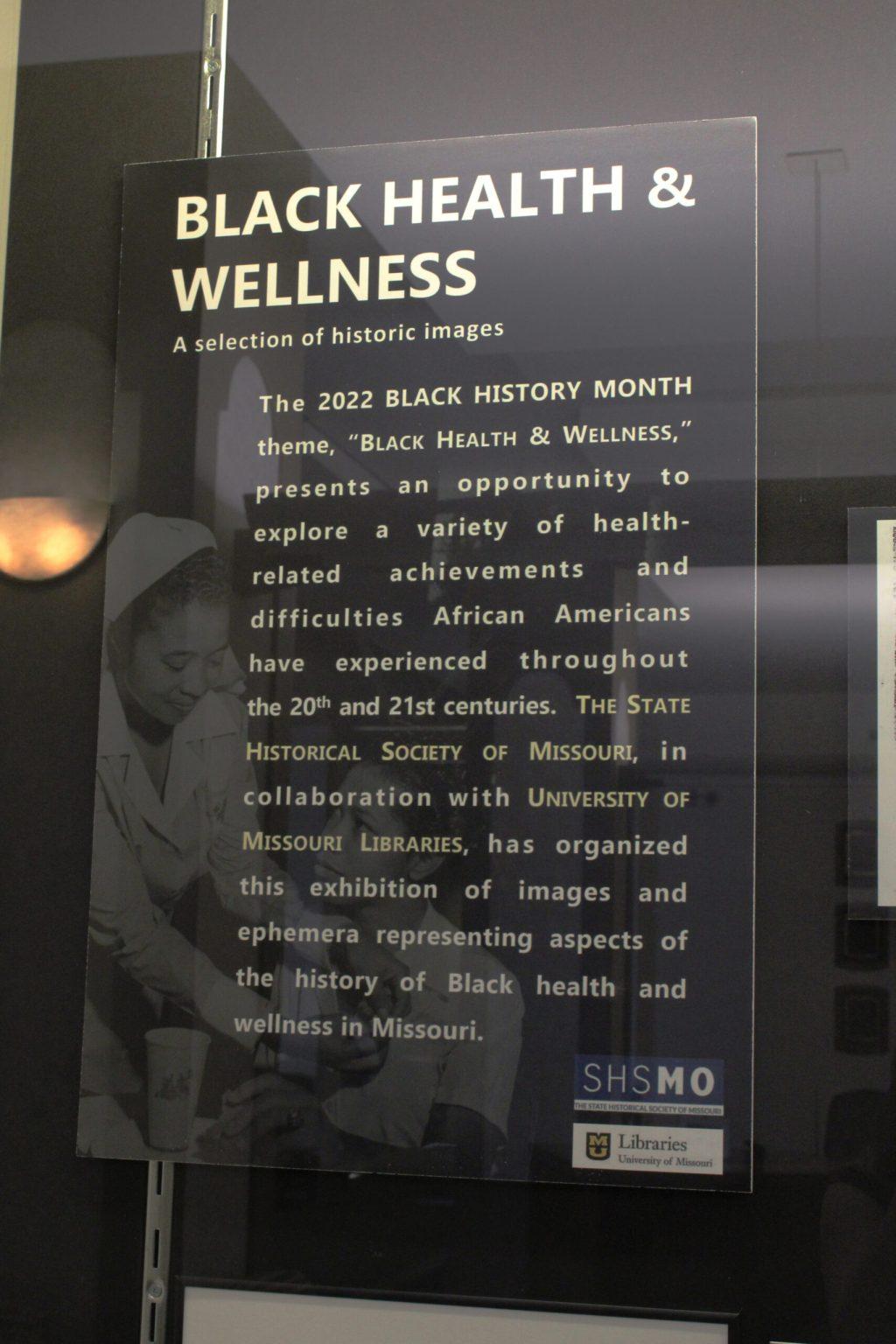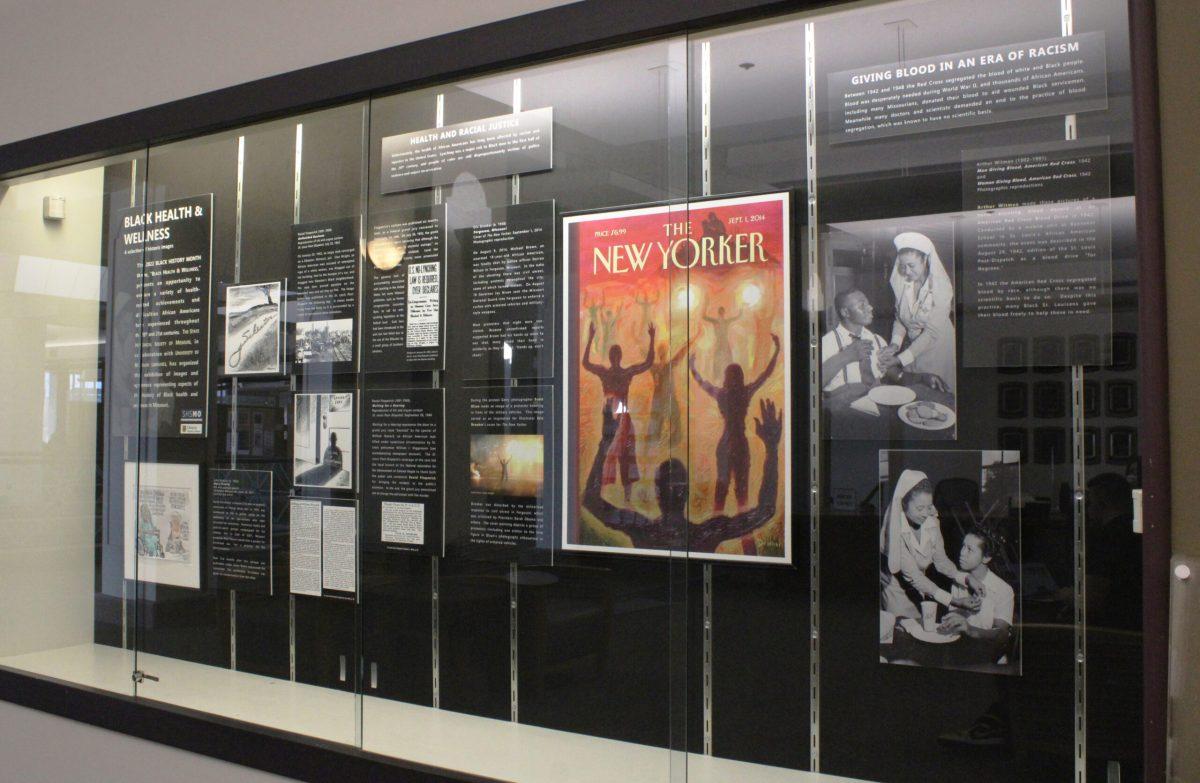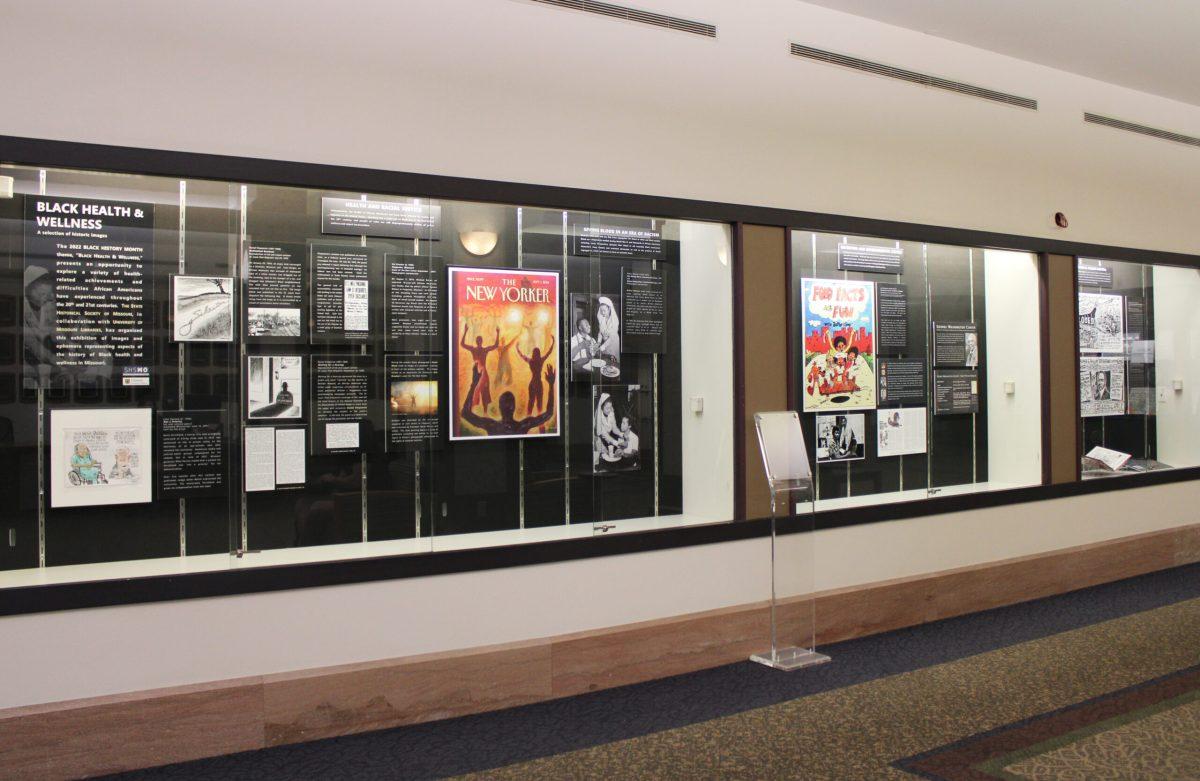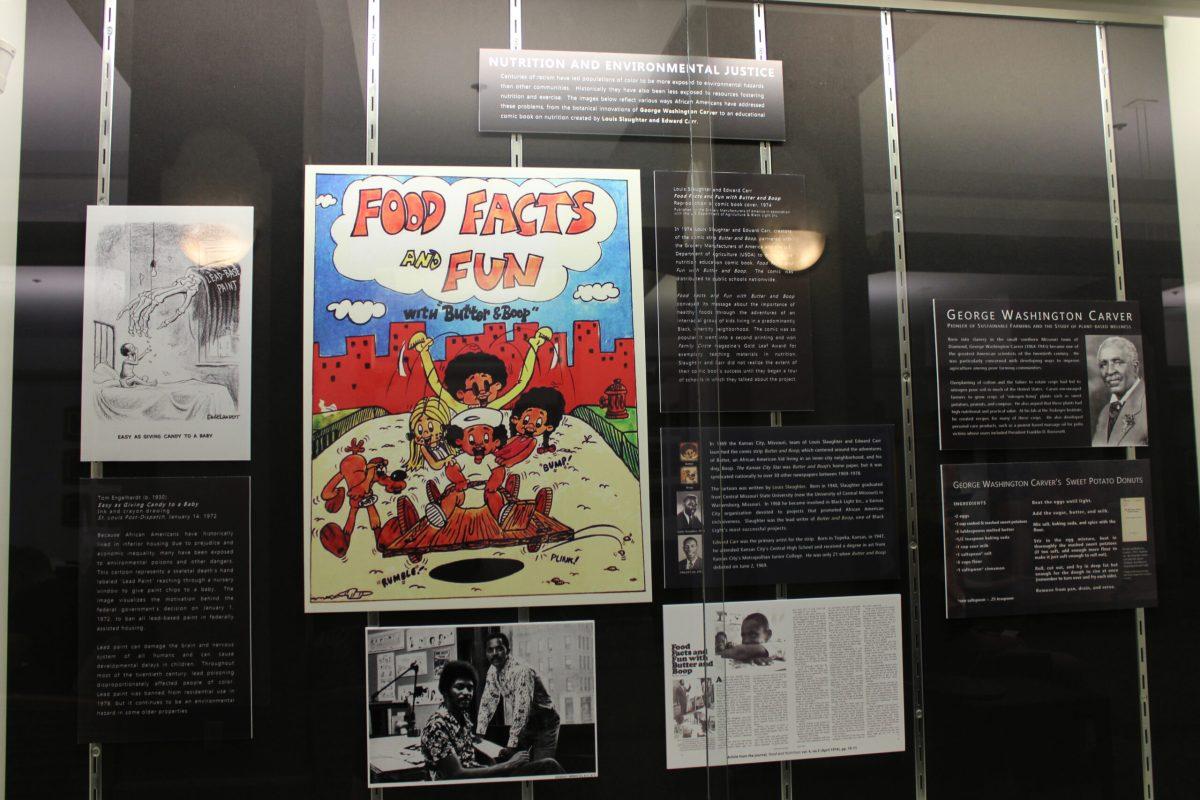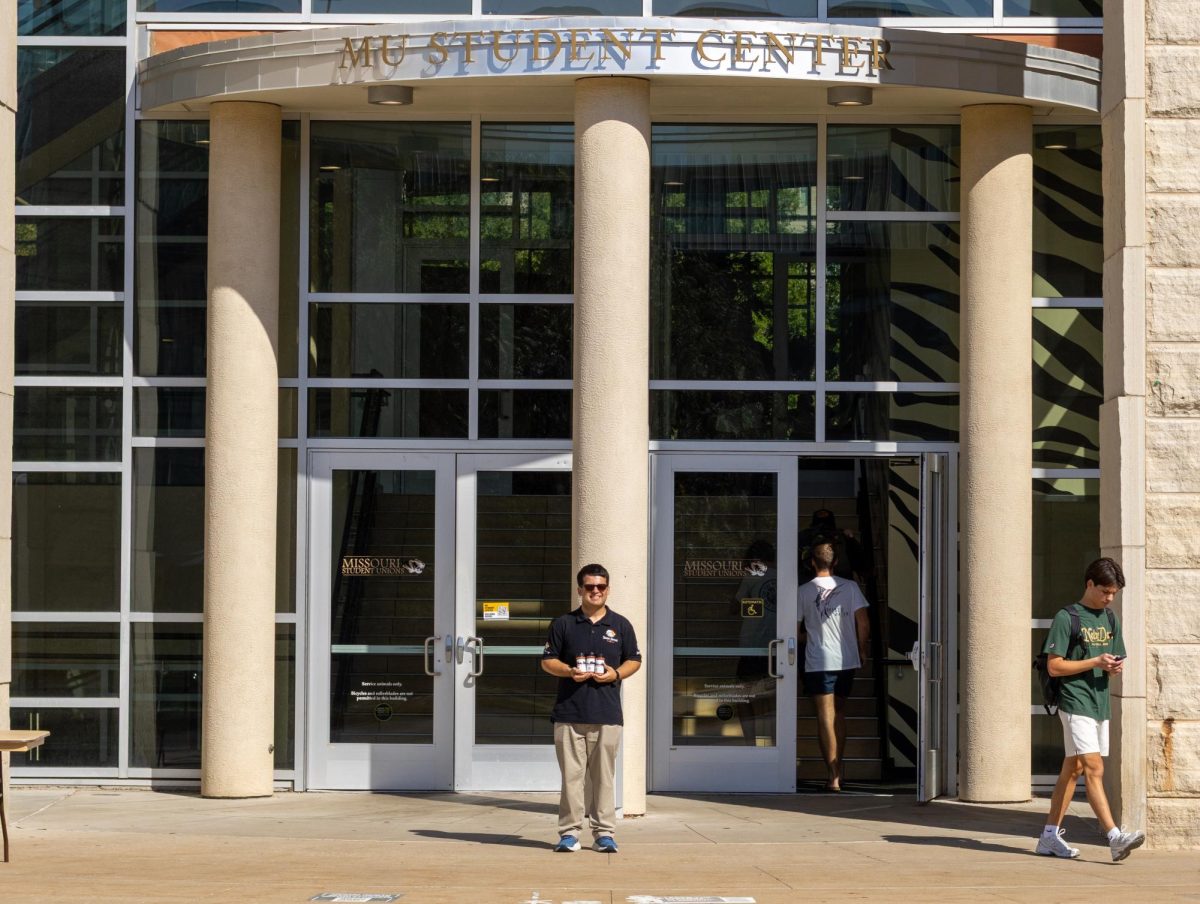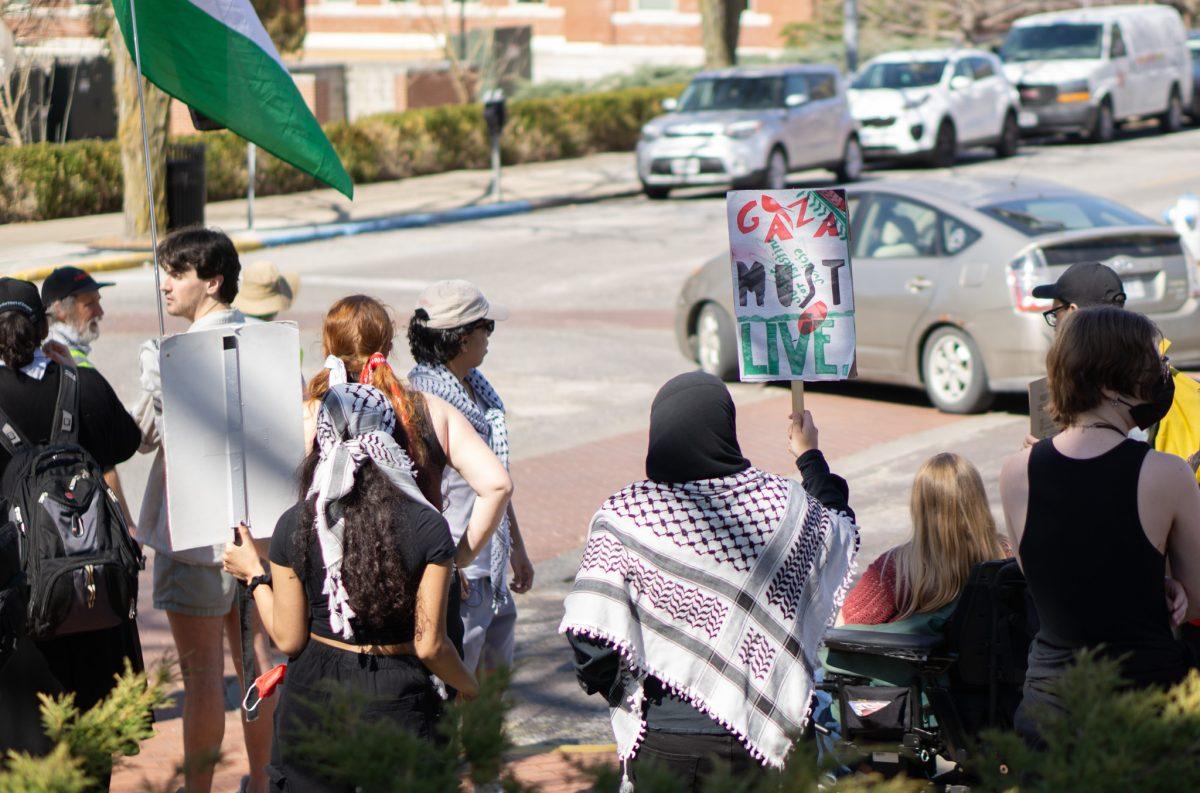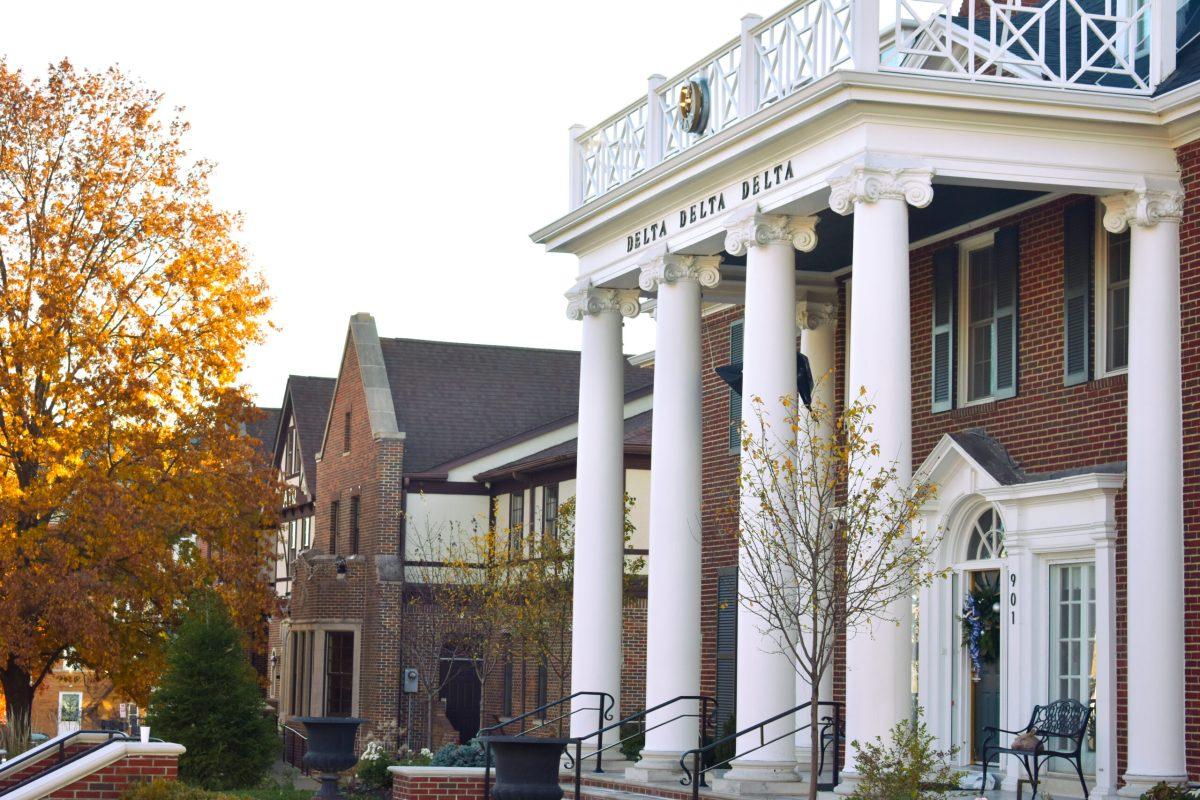From Feb. 22 to May 23, Ellis Library will display an exhibit titled “Black Health and Wellness” in its colonnade cases. The exhibit will have a variety of historical images divided into three sections: social justice, nutrition and environment and the Homer G. Phillips Hospital in St. Louis.
The exhibit is meant to address the national theme of Black History Month, which is “Black Health and Wellness,” however, it extends until May in order to reach more students. It includes historical mixed media that was either created in Missouri, by a Missouri native or about an event that happened in Missouri.
Every year, Ellis Library partners with the State Historical Society of Missouri to showcase an exhibit regarding Black History Month. This year, it encompasses all types of wellness in Black history.
SHSMO owns almost all the pieces in this showcase, which was created by Joan Stack, State Historical Society of Missouri Art Curator.
“What we wanted to do was find how the Black History Month theme manifested itself in Missouri history,” Stack said.
Stack said that she created it to exemplify all angles of Missouri’s Black history.
“We did that in many different ways,” Stack said. “We discussed the negative side, such as how racism affected the health of the African American community, and the positive side, like how African Americans have helped to improve the health and wellness of their own communities and others.”
Isabel Miller, an art intern for SHSMO, described the significance of the exhibit is to not only highlight the past, but also what is happening in the present.
“There is a lot to what we call health and wellness, especially in today’s world,” Miller said. “So, not only are we focusing on physical and mental health and wellness, but also political and social health and wellness.”
The first section of the exhibit is about social justice. It will feature a photograph taken during the Ferguson protests about the police shooting of Michael Brown on Aug. 9, 2014, media from the 1942 Sikeston lynching, a cartoon related to Kevin Strickland — who was wrongly incarcerated for over 40 years — and more.
The second section is about nutrition and environment. It will display a recipe for sweet potato donuts by George Washington Carver. It highlights Carver because he devoted a large majority of his life to solving problems Black farmers and community members had, such as making sure their crops had both monetary and nutritional value.
This section will also have informative comics and cartoons. It will feature a comic titled “Butter & Boop” by Louis Slaughter and Edward Carr. This comic helped push Black children in the 1970s to eat more nutritious foods because it actually featured pictures of people who looked like them.
A cartoon about the effects of lead paint on the Black community will also be on display. The cartoon was made by Tom Engelhardt in 1972 when the government attempted to improve the health and wellness of poor Americans by banning all lead-based paint in federally assisted housing. The cartoon showcases a Black boy in a bed with a skeleton hand, that has the words ‘lead-based paint’ written on it, hovering over him. Stack explained how this cartoon relates to black health, specifically.
“The fact that the baby is African American reflects the general inequality that exists in housing that exposes people of color to more environmental poisons than other populations,” Stack said.
The final section of the exhibit will present historical images and information about the now-closed Homer G. Phillips Hospital. The hospital was once one of the biggest teaching and training facilities for Black Americans in the health profession. This hospital was especially important during Jim Crow segregation since it allowed a place of practice for Black Americans.
Stack said she thinks it will change how people understand Black health and wellness and hopes the changes in their knowledge will lead them to enact physical action in the world.
“I hope that this [exhibit] will inspire people to take action [in regards to racism], but you never know how people will react or what they will remember,” Stack said. “But even if it just inspires more understanding and knowledge and changes hearts and minds, action can evolve from that.”
Edited by Namratha Prasad | [email protected]


